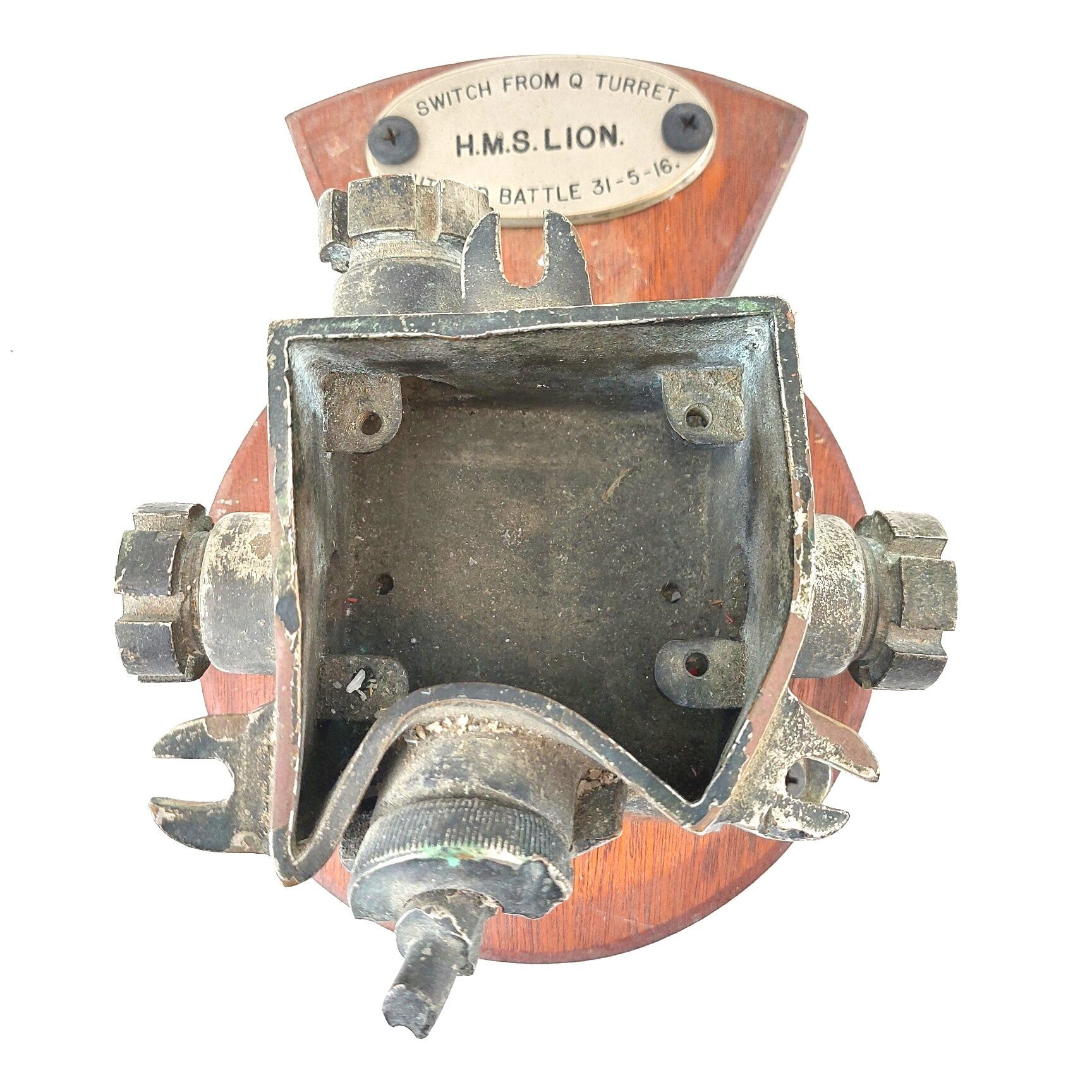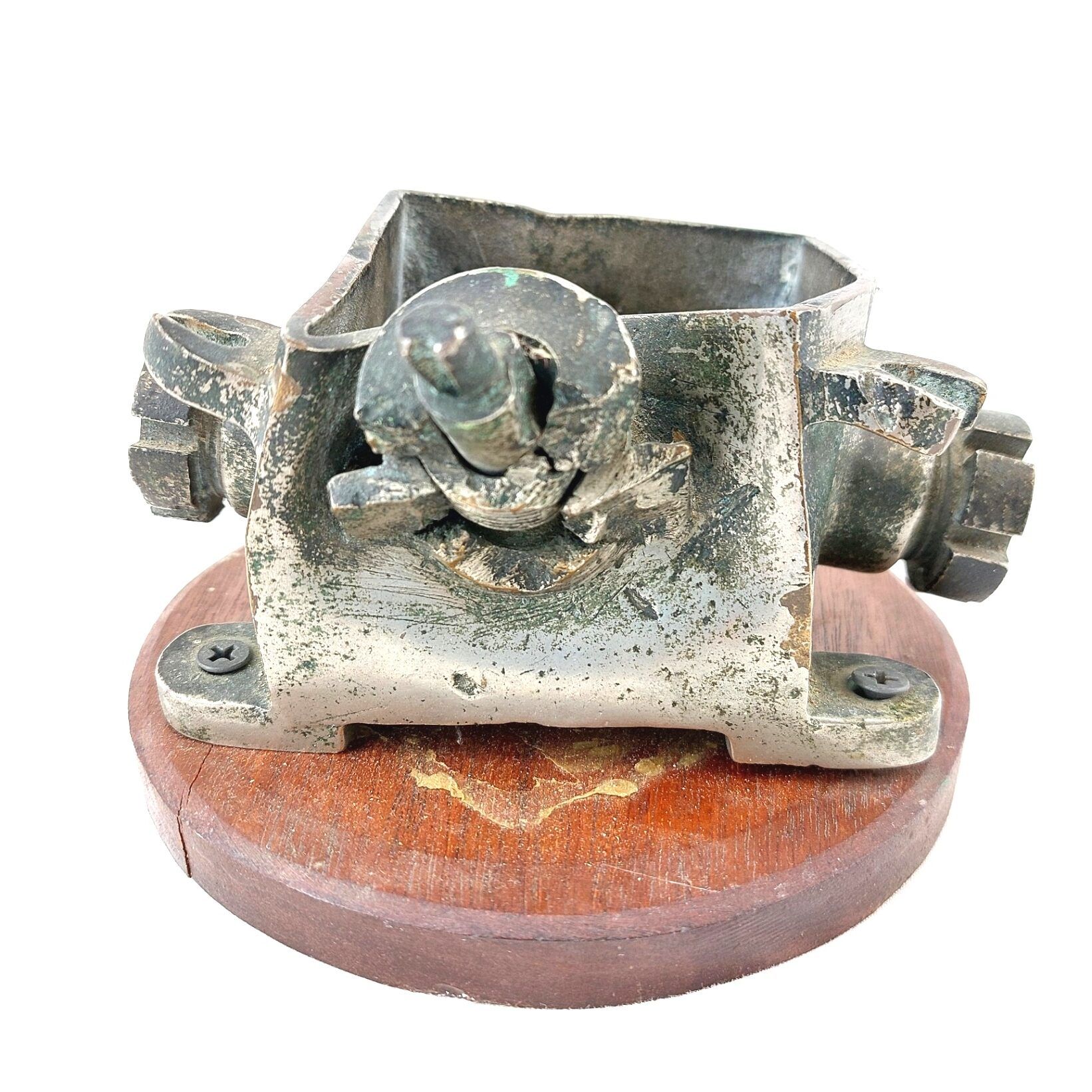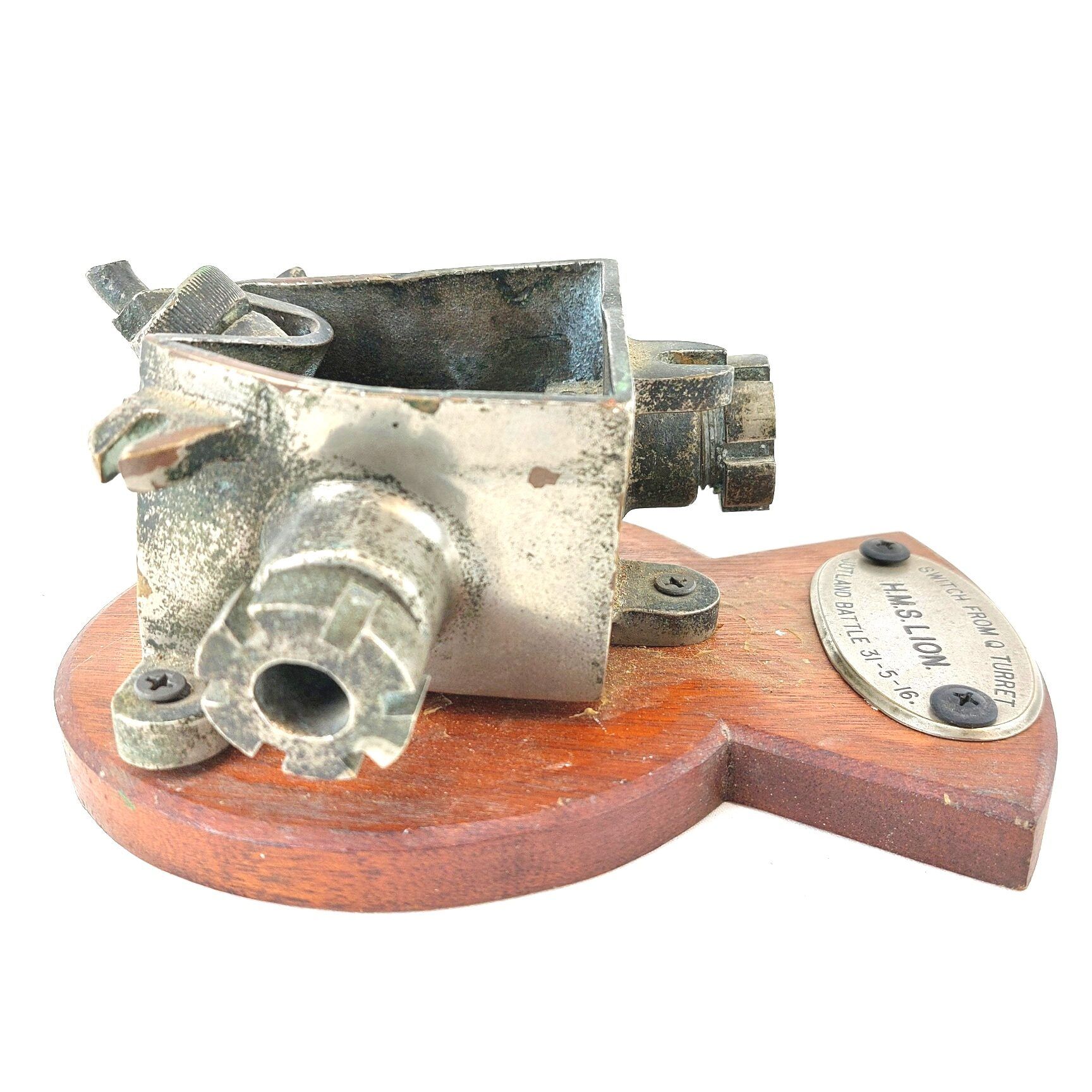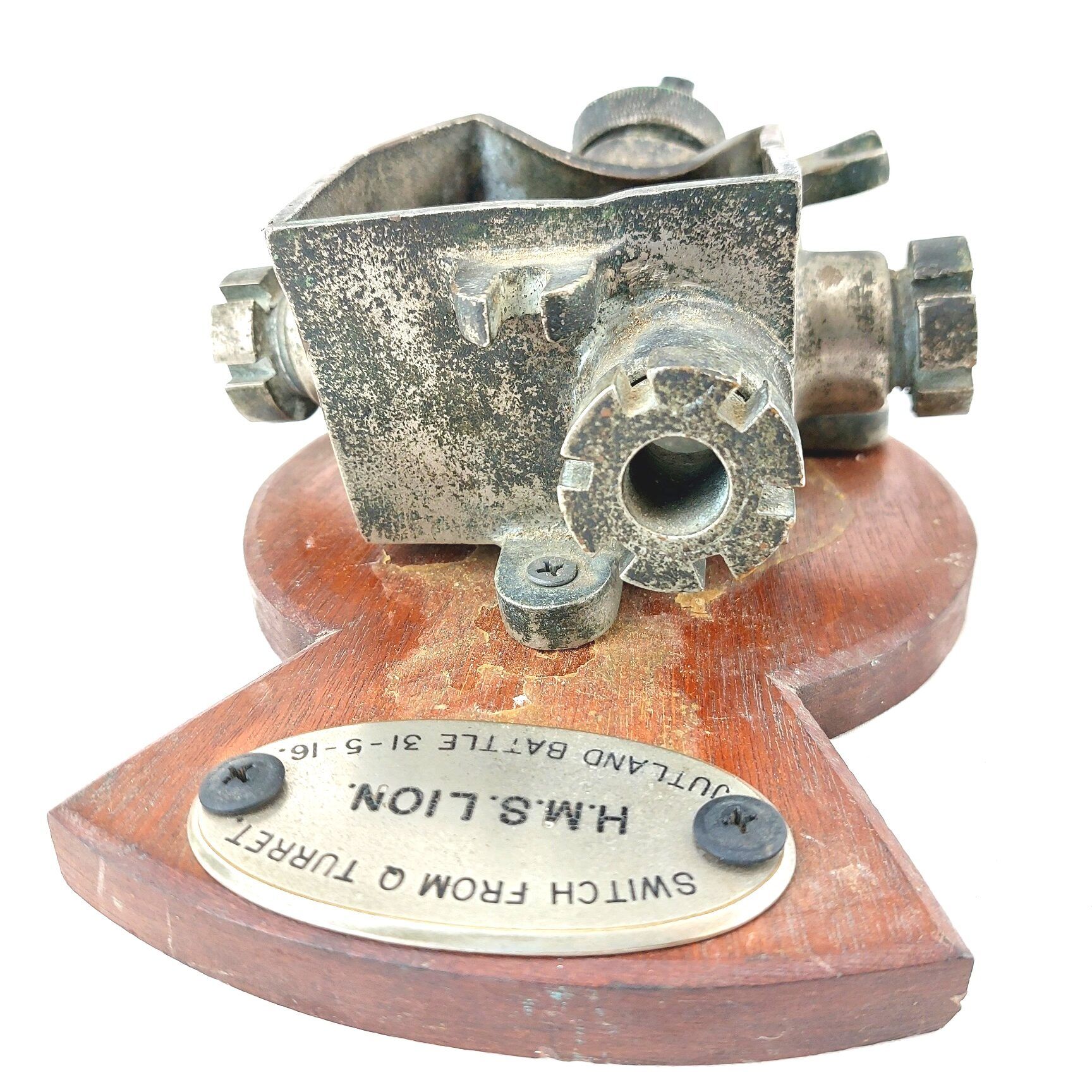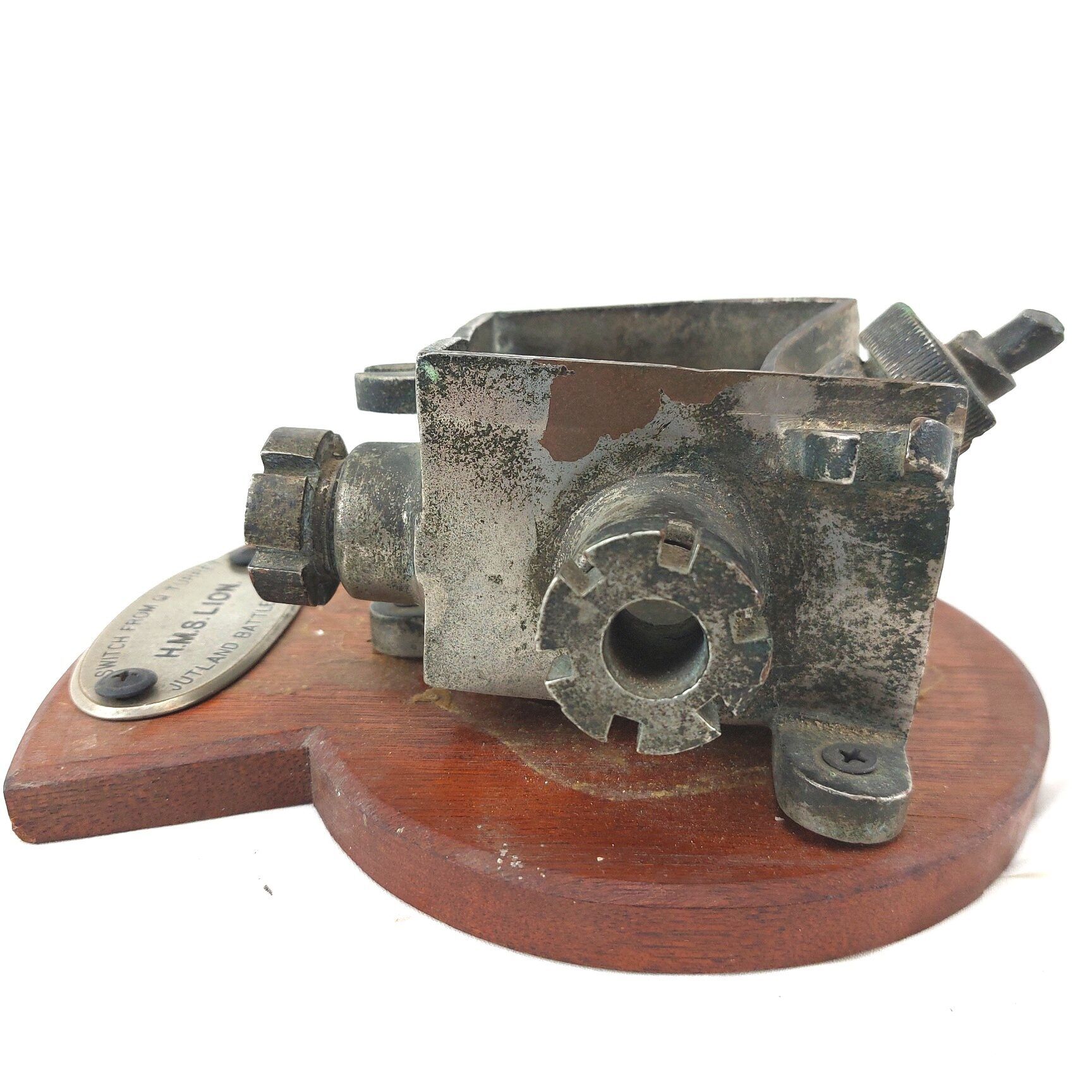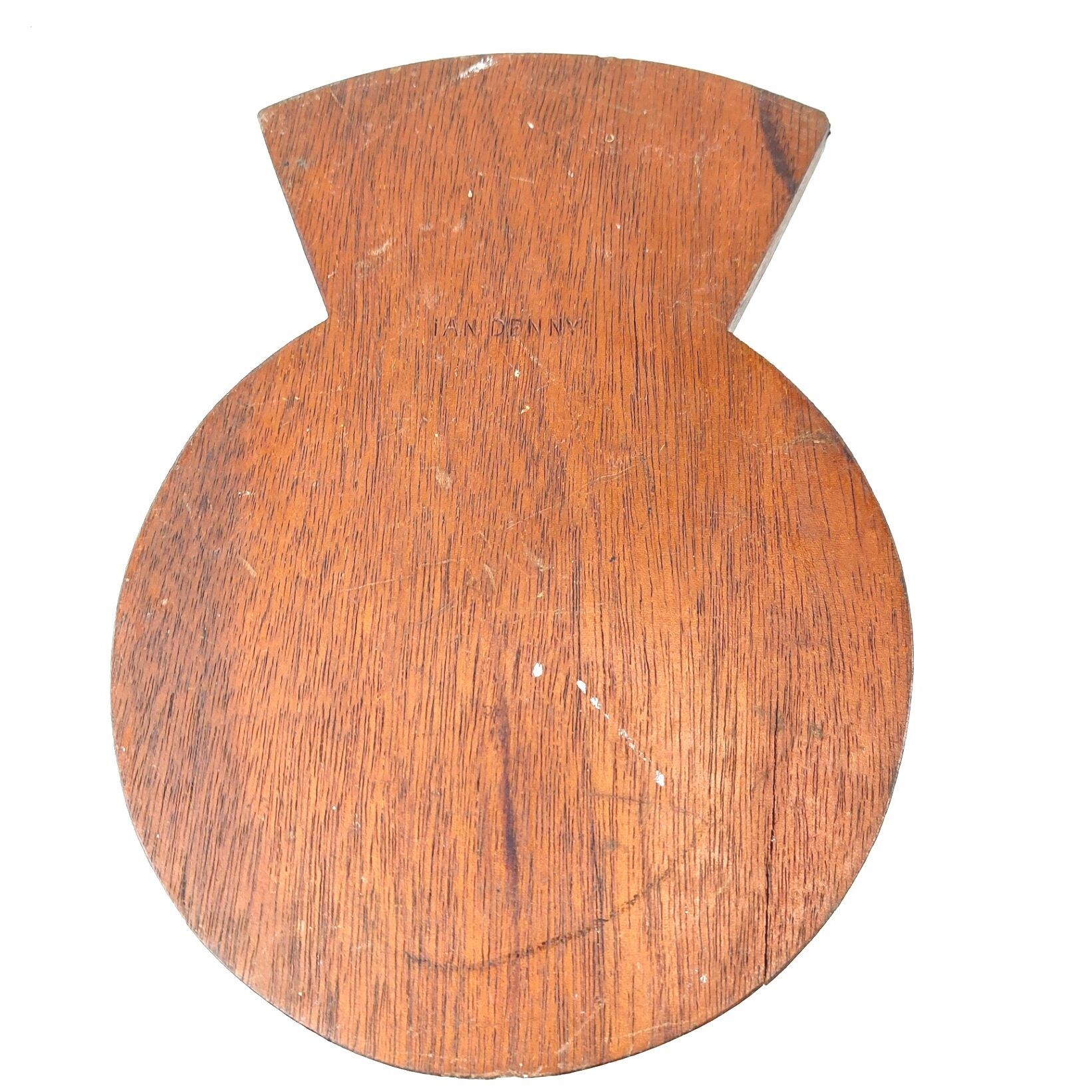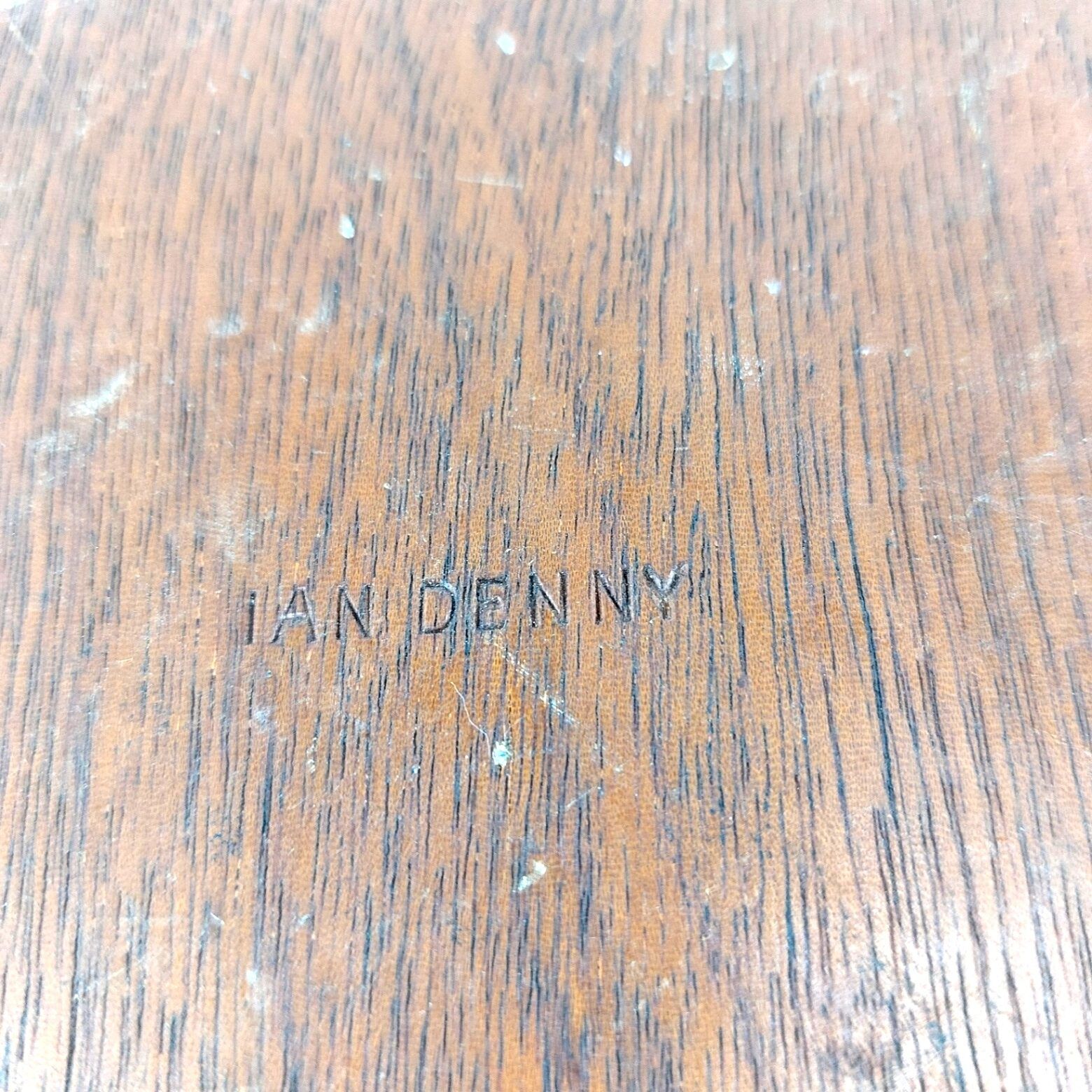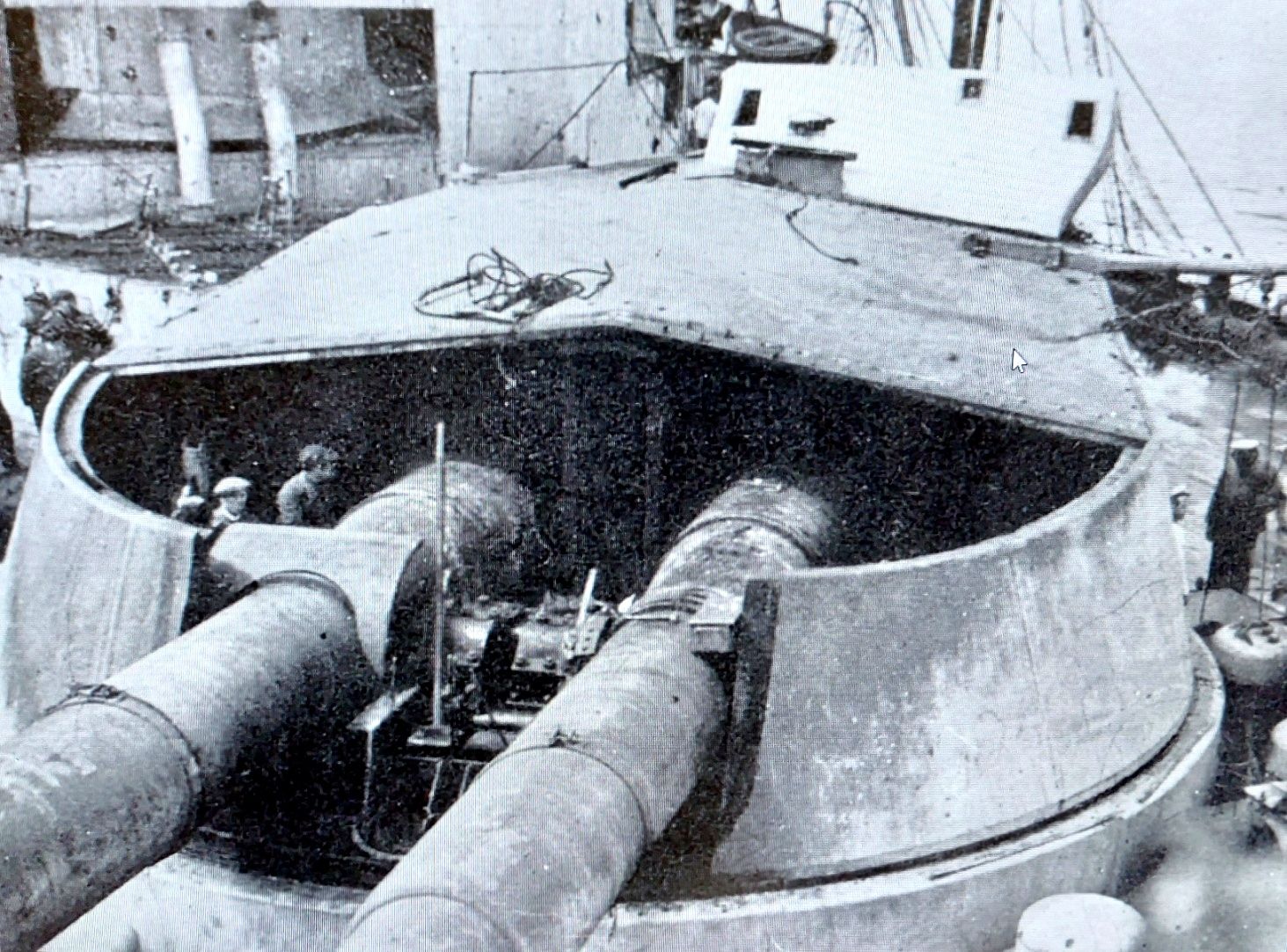*WW1, Switch from Q Turret H.M.S. Lion, Jutland Battle 31-5-16*
Approximate measurements: 19cm tall, 14.2cm wide, 9.5cm deep.
This is a remarkable piece of history. Switch from Q Turret Mounted on wooden Board with oval plaque inscribed: “Switch from Q Turret H.H.S.Lion, Jutland Battle 31-5-16”. Marked “Ian Denny” on reverse.
Attached is a photograph (not included) of HMS Lion’s ‘Q’ turret, showing damage suffered during the Battle of Jutland. The armoured roof and turret face were blown off by a 12″ shell fired by SMS Lutzow. Nearly 100 sailors in the turret & hoist rooms died (99 dead and 55 wounded).
Major Francis Harvey (1873-1916), although mortally wounded by German shellfire, ordered the magazine of Q turret on the battlecruiser Lion to be flooded. This action prevented the tons of cordite stored there from catastrophically detonating in an explosion that would have destroyed the vessel and all aboard her. Although he succumbed to his injuries seconds later, his dying act may have saved over a thousand lives and prompted Winston Churchill to later comment: “In the long, rough, glorious history of the Royal Marines there is no name and no deed which in its character and consequences ranks above this“. The fire destroyed Q turret, necessitating extensive repairs. Lion and the rest of the battlecruisers reached Rosyth on the morning of 2 June 1916 where she began repairs that lasted until 19 July. The remains of ‘Q’ turret were removed during this period and not replaced until later.
Background
HMS Lion was a battlecruiser built for the Royal Navy in the early 1910s and served as the lead ship of the Lion class, which earned the nickname “Splendid Cats.” The Lion-class ships were notable improvements over their predecessors, the Indefatigable class, with enhanced speed, armament, and armor. These upgrades were a direct response to the more formidable German Moltke-class battlecruisers, which were larger and more powerful than the earlier British Invincible class.
Throughout World War I, Lion served as the flagship of the Royal Navy’s battlecruisers, except during refits or repairs. She distinguished herself by sinking the German light cruiser Cöln at the Battle of Heligoland Bight. As Vice-Admiral David Beatty’s flagship, Lion played a crucial role in the Battles of Dogger Bank and Jutland. She was severely damaged during the Battle of Dogger Bank, requiring her to be towed to port for repairs lasting over two months. At Jutland, Lion narrowly escaped destruction due to a serious propellant fire, which was contained thanks to the actions of Major Francis Harvey, who posthumously received the Victoria Cross.
After several months of repairs, Lion resumed patrol duties in the North Sea, though her subsequent actions were uneventful. She provided distant support during the Second Battle of Heligoland Bight in 1917. After the war, she was placed in reserve in 1920 and was ultimately sold for scrap in 1924 as part of the Washington Naval Treaty.
*Condition*
Good used condition. Please see photographs as part of the condition report.
JAQEEXBOO_7612183166


